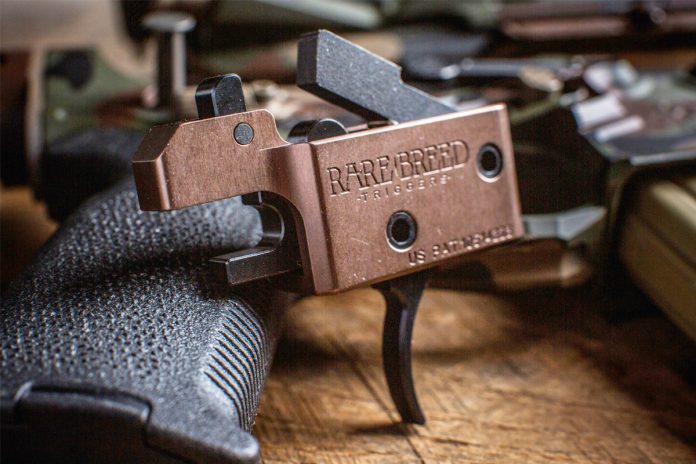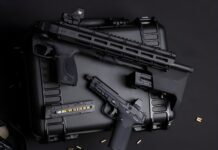
This correspondence was sent to FFL’s today,
The Bureau of Alcohol, Tobacco, Firearms and Explosives (ATF) recently examined devices commonly known as “forced reset triggers” (FRTs) and has determined that some of them are “firearms” and “machineguns” as defined in the National Firearms Act (NFA), and “machineguns” as defined in the Gun Control Act (GCA).
These particular FRTs are being marketed as replacement triggers for AR-type firearms. Unlike traditional triggers and binary triggers (sometimes referred to generally as “FRTs”), the subject FRTs do not require shooters to pull and then subsequently release the trigger to fire a second shot. Instead, these FRTs utilize the firing cycle to eliminate the need for the shooter to release the trigger before a second shot is fired. By contrast, some after-market triggers have similar components but also incorporate a disconnector or similar feature to ensure that the trigger must be released before a second shot may be fired and may not be machineguns.
Both the NFA and GCA regulate machineguns. “Machinegun” is defined under 26 U.S.C. § 5845(b) and 18 U.S.C. § 921(a)(23) as—
Any weapon which shoots, is designed to shoot, or can be readily restored to shoot, automatically more than one shot, without manual reloading, by a single function of the trigger. The term shall also include the frame or receiver of any such weapon, any part designed and intended solely and exclusively, or combination of parts designed and intended, for use in converting a weapon into a machinegun, and any combination of parts from which a machinegun can be assembled if such parts are in the possession or under the control of a person. (Emphasis added.)
ATF’s examination found that some FRT devices allow a firearm to automatically expel more than one shot with a single, continuous pull of the trigger. For this reason, ATF has concluded that FRTs that function in this way are a combination of parts designed and intended for use in converting a weapon into a machinegun, and hence, ATF has classified these devices as a “machinegun” as defined by the NFA and GCA.
Accordingly, ATF’s position is that any FRT that allows a firearm to automatically expel more than one shot with a single, continuous pull of the trigger is a “machinegun”, and is accordingly subject to the GCA prohibitions regarding the possession, transfer, and transport of machineguns under 18 U.S.C. §§ 922(o) and 922(a)(4). They are also subject to registration, transfer, taxation, and possession restrictions under the NFA. See 26 U.S.C. §§ 5841, 5861; 27 CFR 479.101.
Under 26 U.S.C. § 5871, any person who violates or fails to comply with the provisions of the NFA may be fined up to $10,000 per violation and is subject to imprisonment for a term of up to ten years. Further, pursuant to 26 U.S.C. § 5872, any machinegun possessed or transferred in violation of the NFA is subject to seizure and forfeiture. Under 18 U.S.C. § 924(a)(2), any person who violates § 922(o) may be sent to prison for up to 10 years and fined up to $250,000 per person or $500,000 per organization.
Based on ATF’s determination that the FRTs that function as described above are “machineguns” under the NFA and GCA, ATF intends to take appropriate remedial action with respect to sellers and possessors of these devices. Current possessors of these devices are encouraged to contact ATF for further guidance on how they may divest possession. If you are uncertain whether the device you possess is a machinegun as defined by the GCA and NFA, please contact your local ATF Field Office. You may consult the local ATF Office’s webpage for office contact information.



